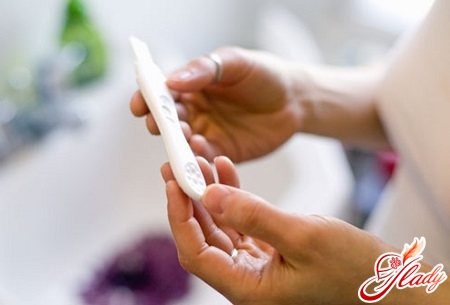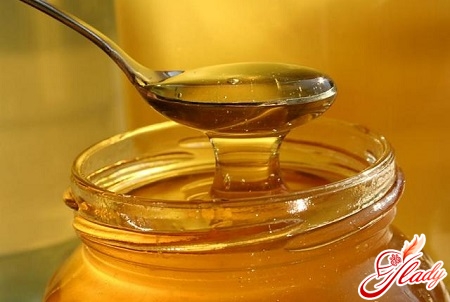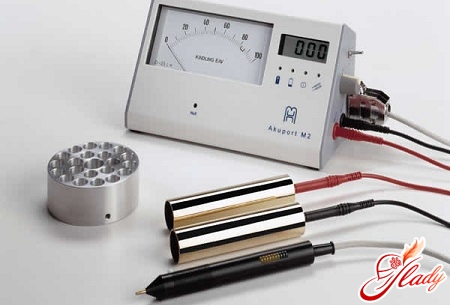 In our time, people are beginning to lose faith intraditional medicine. Many of us at least once in their life have faced ineffective treatment, incompetence of doctors, expensive drugs. Plus, not everyone wants to poison their bodies with so-called chemistry, which causes a lot of side effects. That's why the fair sex is increasingly resorting to alternative (non-traditional) medicine. Yoga, meditation, herbal decoctions, medical starvation on the water - doctors are skeptical about such methods. And this despite the fact that the effectiveness of some of them has been proven and described. But, before you, for example, decide to give up food to cleanse your body, be sure to read the information below.
In our time, people are beginning to lose faith intraditional medicine. Many of us at least once in their life have faced ineffective treatment, incompetence of doctors, expensive drugs. Plus, not everyone wants to poison their bodies with so-called chemistry, which causes a lot of side effects. That's why the fair sex is increasingly resorting to alternative (non-traditional) medicine. Yoga, meditation, herbal decoctions, medical starvation on the water - doctors are skeptical about such methods. And this despite the fact that the effectiveness of some of them has been proven and described. But, before you, for example, decide to give up food to cleanse your body, be sure to read the information below.
What is curative fasting
This method of treating the body became popular inthe world after the publication of Paul Bregg's book The Miracle of Fasting. This method of treatment is based on a voluntary refusal of food, as well as water, followed by a diet for a certain period of time. Bregg was one of the first who insisted on renouncing the modern food system, the main place in which take canned and refined foods. To understand this issue, you can also get acquainted with the recommendations of A.Suvorin, G.Shelton, G.Shatalova. Surprisingly, despite the large amount of literature, this method has not been sufficiently studied to date. Of course, there is evidence of a beneficial effect on the body, when there was an improvement in the treatment of diseases of the central nervous system, bronchial asthma, digestive organs, skin and joint diseases. It is believed that the rejection of harmful food not only cleanses our body and helps restore health, but also positively affects our spiritual life. Such treatment is advisable to begin with the cleansing of the gastrointestinal tract (by taking laxatives or special enemas). A day before the procedure, a light diet is recommended, including raw vegetables, porridges and abundant drinking of alkaline mineral waters. During the period of treatment, smoking is prohibited, medication and alcohol are excluded. 
How to fast: types and methods of treatment
Curative fasting can be divided into"Wet", "dry", combined, fractional, stepwise. "Wet" implies a complete exclusion from the diet of any food. But patients should take at least one or two liters of distilled water. It is important to observe an active lifestyle, take daily walks in the fresh air, sleep in a well-ventilated room for at least eight to nine hours. Also recommended water procedures (reception of a contrast shower, dousing, going to the bath). Thus, you will accelerate the removal of toxic products through the skin. Treatment of "dry" fasting takes less time and is considered more effective. In this case, drink liquid is not allowed. This procedure takes 1-3 days, during this period water procedures are also excluded, only oral hygiene is allowed in the form of rinsing. Pay attention, you can not brush your teeth. Purification of the intestine is not required in this case. By a combined method is meant that the patient first two or three adheres to a "dry" regime, and then switches to "wet". Many scientists are studying fractional, as well as other types of starvation. The most recent method is described in the candidate of medical sciences Georgy Aleksandrovich Voitovich. It provides for several consecutive fractions of total or combined failure of food. The first fraction takes seventeen to twenty days, followed by a restorative diet (for a period of twenty-eight days). The second fraction lasts as long as the first, but the recovery period increases to thirty-five days. There are no clear time limits for the third fraction, usually it lasts until signs of physiological hunger appear. Compulsory restorative nutrition, which must be observed between the fractions, consists of milk and vegetable food. This method of treatment is young. Its principles were first developed in the seventies in the Byelorussian Research Institute of Phthisiopulmonology by Voitovich. The effectiveness of fasting is quite high. It helps with many diseases, including those that are considered incurable. Stepwise fasting involves alternating complete or combined refusal of food with recovery periods. Fasting is usually five to ten days, restored within three to five days with the help of juices, stewed vegetables. It is recommended to carry out 3-4 stages of fasting once or twice a year. Precautions for curative starvation on water The duration of therapeutic starvation on the water depends on many factors. Among them, such as the state of health, the quality of the previous diet, the presence of an anamnesis of experience. An important role is played by the age of the fair sex, the schedule of work, the time of the year. Short-term fasting (duration of one day) is useful as a preventive measure for almost any organism. You need to start it with the refusal of dinner. In the morning you can drink a laxative, then a day we do not take any food. You can drink a lot of filtered water. The next day we begin with the intake of fresh carrot juice, diluted with mineral water (in a 1: 1 ratio). If you already have a positive experience of daily starvation on the water, you can try to resort to this method of cleaning the body, but no more than once a week. Such a break in food intake favorably affects the immune system, helps to gain strength, get rid of fatigue. Naturally, the chosen day for the recovery of the body should not be at noisy events, parties and meetings with friends. Not all are adherents of alternative medicine, and on this ground there can be heated debates that can negatively affect the treatment process. On such a day it is better to stay at home, do business, read, listen to calm music. After you get used to such nutrition, you can go to a three-day fasting (just sit on the water). If your impressions are more positive than negative, you can try ten- and fifteen-day periods. There are also cases of a forty-day refusal of food. However, do not forget that this is a very serious and dangerous step that is taken only if you are prepared. Such a long curative fasting on the water is carried out after less long periods and, of course, under the strictest control of doctors. Otherwise, everything can end badly, up to a lethal outcome. The last stage of curative fasting on the water From the fasting on the water you need to be able to properly exit. If you immediately lean on everything that lies in the refrigerator, you may experience a worsening of the condition or an exacerbation of certain gastrointestinal diseases. Cases of curvature of intestines are not uncommon. Unfortunately, not all women can resist the temptation to eat some goodies. The basic principles of the correct way out: the fragmentation of nutrition, the use of vegetable-milk food, the observance of time intervals. During the first two hundred parts of your diet completely exclude salt, animal and vegetable proteins (meat, legumes, mushrooms). Please note that the duration of the release should be at least half the length of the fasting period. So, for example, if the fair sex did not eat anything for 4 days, 2 days she should eat a little, often, while washing the food with a copious amount of water. In your diet must necessarily be vegetable and fruit juices, which are taken every few hours in small portions. In the early days it is recommended to dilute concentrated drinks with water, then you can consume whole. Gradually include in the menu of porridge, soups, salads, dairy products, seeds, nuts. All of the above is consumed once a day. In the second and third week, the number of meals increases to three to four per day. There are many diets that are suitable for recovery. Choose what you prefer. What not to eat after a fasting disease However, there are foods that you should abstain from using, if you leave the curative starvation on the water. This list includes: ketchup, mustard, hot tomato juice, marinades, green olives. Refuse to recommend and from salted nuts, fried foods, pork, canned soups, flour, pasta. Salt should be treated with caution. Adherents of a healthy lifestyle believe that it poisons the body, damages the walls of blood vessels, raises blood pressure. The use of natural salt substitutes, such as seaweed, garlic powder, lemon juice, is safe. Plus, these additives are easily digested. When and to whom starvation on water is contraindicated During pregnancy and lactation, fasting on water is unacceptable. There are a number of diseases in which the choice of this method of treatment is contraindicated. It is necessary to familiarize yourself with this list in order not to harm your body. And in any case, do not forget to consult a specialist beforehand. Important! Visit the gastroenterologist and examine your stomach to exclude gastritis, ulcer, cancer and other diseases. It should be remembered that therapeutic starvation on the water should be carried out only under the supervision of a competent person. During this period it is necessary to constantly monitor indicators such as pulse and blood pressure. It is also advisable to keep records of the drunk and secreted fluid, monitor the condition of the skin and mucous membranes, for weight. For the period of health improvement with the help of this method, it is better to take time off from work, since the procedure will require a slightly different rhythm of life from you. During this period, you will need to perform three-hour half-hour walks in the fresh air, which should alternate with a three-hour rest. Morning exercise should become an essential attribute of the beginning of the day. To sit on a fasting is necessary with a positive attitude and belief in his favor. Avoid negative emotions, disputes, conflict situations, be friendly to all. Do not starve yourself if you feel bad. To achieve maximum effect, perform therapeutic meditations. Very important is the belief in the possibility of your body. Many people consider curative starvation on water as a panacea for all diseases and replacement with any medications, as well as for better preventive and rejuvenating therapy.









